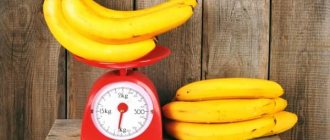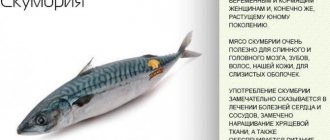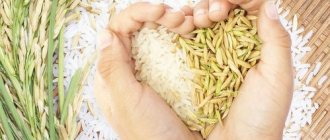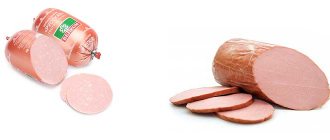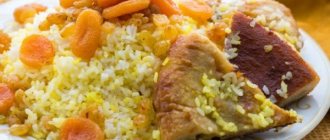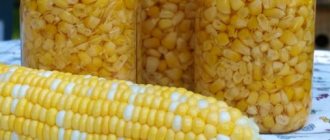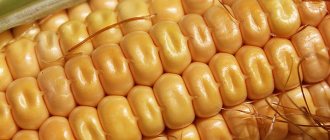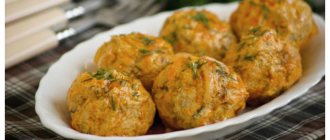Chemical composition and nutritional value
The chemical formula of the product includes:
- fats;
- proteins;
- carbohydrates;
- ash;
- water;
- vitamins;
- amino acids;
- minerals.
Among the amino acids, the following substances predominate:
- glutamine (4.087 g);
- aspartic (2.432 g);
- lysine (2.318 g);
- leucine (2.048 g).
A special role is played by glycine, methionine and arginine, which make up the important substance creatine. It increases endurance, adds strength, and reduces fatigue.
Boiled chicken contains a lot of protein, which is well absorbed by the stomach and is important for athletes who build muscle mass. The nutritional value of the product is 693 kJ. 100 grams contain 36% protein, 8% fat and 0% carbohydrates (daily value). Chicken contains 75.46 g of water and 0.96 g of ash. There is no sugar, fiber or starch in dietary meat. The amount of cholesterol is 70 mg.
What foods contain protein?
Animal Protein Sources
Chicken breasts are perhaps the record holder for the ratio of protein to fat - for 170 grams of meat there are only 3 grams of fat and about 40 grams of protein. Naturally, we are talking about chicken meat, steamed or boiled. 100 grams of both chicken and turkey breasts contain 22-25 grams of protein.
Rabbit meat is also rich in protein. 100 grams contain 22-23 grams of protein and very little fat - usually no more than 10 grams. Rabbit meat is healthy and has a good taste. The only drawback of rabbit meat is the difficulty in preparing it.
Offal. Chicken, turkey and rabbit livers, kidneys, hearts, stomachs practically do not differ from meat in the amount of protein they contain - 100 grams of offal contains about 15-20 grams of protein. There is only one “but” - they contain almost 12% fat. This is a great option for those who save their money.
Lean beef contains a large amount of proteins, vitamins B3 and B12, iron, and zinc. However, there is one caveat: such meat contains a lot of dietary cholesterol and saturated fats. 200 grams contain 33 grams of protein and 300 kcal. The downside of “marbled beef” is its price; in today’s realities, it is much more profitable to buy chicken or turkey.
Delicious recipe! Garlic Soup Dumplings Recipe
Quail eggs, due to their size, are a poor source of protein. Goose and duck eggs contain a large amount of fat. Therefore, the egg white of chicken eggs is the most popular in the sports environment, it contains the necessary and essential amino acids necessary for building muscle tissue.
The main share of protein is contained in the “white” of a chicken egg. An average-sized egg contains about 7 grams of protein, of which only two are contained in the yolk.
Cottage cheese and dairy products
If you are aiming to consume a large amount of protein, but have some difficulty digesting milk, do not despair. There are a wide variety of other easily digestible dairy products that provide adequate amounts of protein.
Low-fat cottage cheese is considered a rich source of protein - just 100g contains 17-18g of protein. Since this protein is absorbed quite slowly, cottage cheese is eaten at night, thereby providing the body with the necessary amount of amino acids. There is an important nuance: consuming cottage cheese in large quantities slows down metabolism, and if the metabolism is already slow, then it is recommended to eat no more than 100-120 grams of this dairy product per day.
Yogurt and kefir do not contain very much protein - only 3-3.5 grams per hundred, but these products can perfectly act as additional sources of macronutrients.
Cheeses contain an average amount of protein. True, in addition to protein, they are also rich in fats. There are low-fat cheeses, but they are extremely difficult to find on shelves.
White fish
White fish (pollock, whiting, cod or hake) are a valuable source of protein. The leanest variety of such fish contains up to 20 grams of protein per 100 grams of product, despite the fact that its calorie content will not exceed 80 kcal.
White fish is perfect for those who are counting calories or following a diet. It is recommended to buy this fish fresh, but if this is not possible, then give preference to dry frozen fish.
red fish
An excellent source of proteins and healthy fats that support the immune system and have a positive effect on the cardiovascular system. For example, just 100g of Atlantic salmon contains 30g of protein, 9g of fat (of which 3-4g are monosaturated fats).
Unlike white fish, red fish is higher in calories - 210 kcal per 100 g of product. Red fish contains a large amount of vitamin B12, which takes part in metabolism.
Delicious recipe! Dark chocolate with salt
Calorie content and nutritional value of boiled chicken
The calorie content of boiled chicken is 180-200 kcal (per 100 g). If you cook meat with skin, the figure will increase to 218 kcal.
Per 100 g of product there are:
- 24.17 g protein;
- 7.61 g fat;
- 0.64 g carbohydrates.
Each part of a chicken carcass has its own calorie content:
- boiled chicken breast – 115 kcal;
- leg – 160-180 kcal;
- thigh – 180-210 kcal;
- wings – 180-190 kcal.
A sufficient amount of protein and the absence of carbohydrates allow the product to be used as the main ingredient for preparing dietary dishes. To reduce the calorie content of boiled chicken, it is advised:
- remove skin and fat from meat;
- pour out the broth 15-20 minutes after bubbles appear, and then cook it again;
- serve chicken with fresh tomatoes, cucumbers, sweet peppers and parsley to speed up the absorption of fats;
- do not use additional additives in the form of sauces and salty spices.
If possible, it is recommended to buy chicken breast rather than chicken legs.
How many calories are in chicken and chicken by-products of different cooking methods?
Chicken soup, chicken stew, chicken breast on a salad - chicken in almost any form is very healthy.
Chicken is a lean and low-calorie protein food, making it ideal for weight maintenance. Not to mention, this bird is chock full of essential nutrients and vitamins. But how many calories are in chicken? It all depends on:
- what part of the chicken was cooked;
- how it is prepared;
- how she was prepared.
Different parts of chicken have different levels of fat and cholesterol. When counting the calories in a chicken dish, it's important to consider these factors because there will ultimately be a big difference between one chicken leg and one half chicken breast, or between a fried breast and a grilled one.
Chicken can be called a healthy or unhealthy food depending on the method of preparation.
. Probably the most famous way to cook chicken is chicken soup, which is especially useful for colds. Fried chicken is clearly not healthy, but boiled chicken is not only tasty, but also healthy. Additionally, the freshness of the chicken also influences the health benefits. Frozen chicken is not healthy because it contains preservatives. But fresh chicken is packed with healthy proteins.
If you are concerned about the number of calories you consume in chicken dishes, remove the chicken skin
because it contains a lot of fat.
| How many calories are in whole chicken? | ||
| Calorie content, kcal per 1 piece. | ||
| Domestic chicken carcass | 195,09 | 2926 |
| Broiler carcass | 219 | 6570 |
| Chicken carcass | 201,07 | 1053,5 |
| How many calories are in different parts of chicken? | ||
| Chicken product/chicken dish | Calorie content, kcal per 100 grams | |
| Shin (leg) | 177,77 | |
| Quarter (ham) | 181,73 | |
| Hip | 181,28 | |
| Carbonate | 190 | |
| Fillet | 124,20 | |
| Breast | 115,77 | |
| Necks | 166,55 | |
| Wings (wings) | 198,51 | |
| Paws | 130 | |
| Backrests | 319 | |
| How many calories are in chicken by-products? | ||
| Chicken product/chicken dish | Calorie content, kcal per 100 grams | |
| Liver | 142,75 | |
| Hearts (hearts) | 160,33 | |
| Navels | 114,76 | |
| Stomachs (ventricles) | 127,35 | |
| Leather | 206,80 | |
| How many calories are in chicken in different cooking methods? | ||
| Chicken product/chicken dish | Calorie content, kcal per 100 grams | |
| Raw | 191,09 | |
| Boiled | 166,83 | |
| Boiled breast without skin | 241 | |
| Fried | 228,75 | |
| Stewed | 169,83 | |
| Smoked | 184 | |
| Grill | 183,78 | |
| Baked in the oven | 244,66 | |
| White meat chicken broth | 15 | |
| Ground meat | 143 | |
Content of vitamins and microelements
Boiled chicken meat contains the following vitamins:
- A;
- D;
- D3;
- E;
- K;
- IN 1;
- AT 2;
- B4;
- B5;
- B6;
- AT 12;
- RR.
The product contains the most vitamin B4 (72.4 mg). Choline deficiency in the body leads to increased irritability, decreased mental abilities and serious diseases such as gastrointestinal pathologies and sexual dysfunctions.
The product contains vital elements:
- sodium;
- phosphorus;
- potassium;
- calcium;
- iron;
- magnesium;
- manganese;
- zinc.
Boiled chicken contains the most potassium (180 mg) and phosphorus (150 mg). A lack of these substances leads to drowsiness, muscle pain, heart rhythm disturbances and hypotension. Nutrients maintain fluid balance in the body, regulate muscle activity and coordinate heart rhythm. They are sources of energy and support all biological processes in the body.
Chicken meat in dietetics and for weight loss
Chicken is one of the best sources of protein
and is also suitable for any diet that requires a source of lean meat and protein. In particular, chicken fillet has beneficial properties. , are known to be effective in weight loss. Chicken is the main assistant in weight loss, since the meat provides high protein content. Studies and trials have shown that significant weight control has been observed in those people who eat chicken regularly.
Proteins in chicken meat help:
- muscle growth and development;
- maintain a healthy body weight;
- lose weight.
Daily consumption of poultry meat
Chicken meat is much more nutritious than, for example, beef. It is recommended for those who want to normalize weight. However, for good functioning of the body, one should include in the diet not only poultry, but also rabbit and pork meat.
Experts do not recommend eating more than 210-220 g per day. This is the optimal amount for an adult who is interested in sports or spends a lot of time doing physical labor.
For children under 3 years old, 75 g of chicken per day is enough. Boys and girls aged 4 to 7 years can eat up to 100-120 g of product. The same amount is suitable for an elderly person.
Report errors and inaccuracies
- 0.2 pieces chicken (without skin and bones)
- 0.7 glasses of finely chopped meat 1 glass - how much?
- Weight with waste 192.3 g Waste: bone 34%, skin 14% (48% of weight). The calculations use the weight of only the edible part of the product.
Listed below are the nutrient standards that apply to the site.
Nutritional value and chemical composition “Boiled chicken, 2-4 each.”
| Nutrient | Quantity | Norm** | % of the norm in 100 g | % of the norm in 100 kcal | 100% normal |
| Calorie content | 244 kcal | 1684 kcal | 14.5% | 5.9% | 690 g |
| Squirrels | 22.6 g | 76 g | 29.7% | 12.2% | 336 g |
| Fats | 17 g | 56 g | 30.4% | 12.5% | 329 g |
| Water | 59.5 g | 2273 g | 2.6% | 1.1% | 3820 g |
| Ash | 0.9 g | ||||
| Vitamins | |||||
| Vitamin A, RE | 40 mcg | 900 mcg | 4.4% | 1.8% | 2250 g |
| Retinol | 0.04 mg | ||||
| Vitamin B1, thiamine | 0.04 mg | 1.5 mg | 2.7% | 1.1% | 3750 g |
| Vitamin B2, riboflavin | 0.12 mg | 1.8 mg | 6.7% | 2.7% | 1500 g |
| Vitamin C, ascorbic acid | 1.4 mg | 90 mg | 1.6% | 0.7% | 6429 g |
| Vitamin E, alpha tocopherol, TE | 0.4 mg | 15 mg | 2.7% | 1.1% | 3750 g |
| Vitamin RR, NE | 12.1 mg | 20 mg | 60.5% | 24.8% | 165 g |
| Niacin | 6.1 mg | ||||
| Macronutrients | |||||
| Potassium, K | 163 mg | 2500 mg | 6.5% | 2.7% | 1534 g |
| Calcium, Ca | 33 mg | 1000 mg | 3.3% | 1.4% | 3030 g |
| Magnesium, Mg | 19 mg | 400 mg | 4.8% | 2% | 2105 g |
| Sodium, Na | 277 mg | 1300 mg | 21.3% | 8.7% | 469 g |
| Phosphorus, Ph | 156 mg | 800 mg | 19.5% | 8% | 513 g |
| Microelements | |||||
| Iron, Fe | 1.6 mg | 18 mg | 8.9% | 3.6% | 1125 g |
| Sterols (sterols) | |||||
| Cholesterol | 75 mg | max 300 mg | |||
| Saturated fatty acids | |||||
| Saturated fatty acids | 4.1 g | max 18.7 g |

